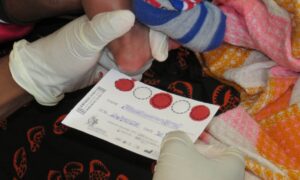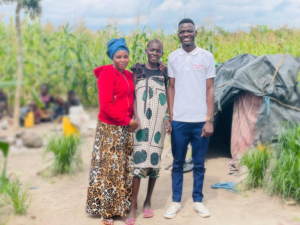By Kuduishe Kisowile.
Dar es Salaam. Four decades ago at Ndolage hospital in Kagera, the then medical officer in charge Doctor Callixte Twagirayezu and his team admitted two men and one girl. The mysterious illness that these patients suffered, would later change the healthcare system forever.Despite running all available tests at the time, nothing pinned out.
In a bid to search for answers, Dr Twagirayezu reached out to his Swedish colleague by letter about the patients, who then responded by sending The Lancet journal with instructions to read page 121 for possible answers. The mysterious illness then popularly known as “silimu” derived from the English word slim, because the majority of patients lost weight and appeared slim was later confirmed to be HIV/AIDS.
Dr Twagirayezu later included the information in his end of the year report to the Ministry of Health. And the fight against the HIV/AIDS epidemic in Tanzania began.
Tanzania was recovering from the war with Uganda, when the world announced the emergence of HIV/AIDS pandemic. In his interview with MedicoPRESS, Dr Twagirayezu explained how the fight against HIV/AIDS was at the time.
“We tested and confirmed that it was the virus. The test was first done at Ndolage,” he said. The first HIV diagnostic test was approved by the US Food and Drug Administration(FDA) in 1985 but it was until 2002 when the first rapid test was approved.
Today, there are quite several available tests including the HIV Self Testing(HIVST) that was approved in Tanzania in 2019 after the amendment of the HIV and AIDS Prevention and Control Act. The added sections provided for the HIV self-testing, the procedures for undertaking HIV Self-testing, responsibilities of persons providing or distributing self-test kits, quality of self-test kits as well as methods of HIV self-testing.
The first HIVST kit was proposed in 1986 and after several research, the World Health Organization(WHO) formally recommended HIVST in 2016. Currently, almost 100 countries have incorporated HIVST into their national testing strategy; Tanzania included.

Figure 1: The Oral HIV Self-Test kit that is used in Tanzania.
Photo by Joancen Kagombora, Dar es Salaam
HIVST has been crucial in complementing the existing HIV testing strategies especially for key populations by addressing barriers such as confidentiality concerns and fear of stigma. It minimizes the number of facility visits people must make, thereby reducing both the cost to clients of frequent testing and the burden HIV testing places on health services.
Management and Development for Health(MDH) being an important stakeholder of HIV/AIDS epidemic control, has employed HIVST as an intervention to expand HIV testing services. And in order to track, monitor and evaluate for follow up; MDH records the number of HIVST kits delivered and to whom.
Between October 2022 and March 2023, MDH delivered 155,996 HIVST kits to clients in the supported regions; Dar es Salaam, Kagera, Tabora and Geita. Out of those, 151,946 HIVST kits were returned of which 6,901(4.5%) kits were HIV positive.
HIVST is a preliminary investigation, thus for those with reactive results implying HIV positive; are to seek further testing in health facilities. This is communicated when a client is provided with HIVST kit. Out of the 6,901 kits that were reactive, 5,928 clients tested positive upon further testing in their respective health facilities, confirming their HIV status and linking them to care.
Nevertheless, HIVST has proved to be significant during outbreaks as a method of sustaining HIV care when outbreaks disrupt the normal health services. During the Marburg Viral Disease(MVD) outbreak in Kagera between March and April 2023, some health facilities were closed temporarily disrupting the usual HIV testing services.

Figure 2: MDH supported Healthcare provider teaching how to use HIV Self-Test kit during World TB Day celebrations on 24/03/2023 at Lwamgasa, Geita.
Photo by Kasanga Tumbo, Geita.
Healthcare providers together with community peer educators supported by MDH distributed HIVST kits to the community and encouraged their use, followed by phone calls to discuss the results. This ensured continued access to HIV testing services while minimizing the risk of transmission of MVD.
According to the Tanzania Demographic and Health Survey(TDHS) of 2022, 80 percent of women age 15–49 have been tested for HIV and received the results of the test; and 35 percent of men age 15–49 have never been tested for HIV. Meanwhile only 38 percent of women and 18 percent of men age 15–19 have ever tested for HIV.
HIVST can be crucial in closing the gender and age gap in HIV testing services by acting as a catchment intervention for men and youth.
Through collaborately efforts between the Government of Tanzania and MDH through the funding from U.S CDC; HIVST has scaled up HIV testing services, therefore approaching the Tanzania’s goal to reach 95 percent of people living with HIV aware of their status by 2030.



